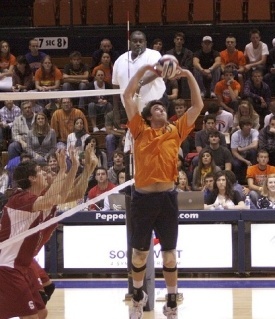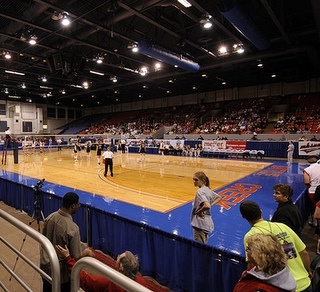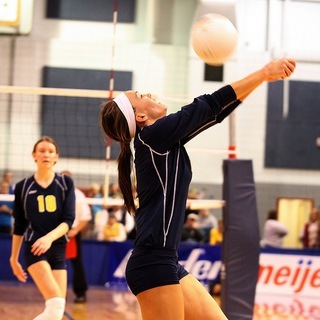Serving a volleyball in the right places is one of the easiest ways to score. When the other team’s offense gets disrupted by your serving strategy, the end result is to score several easy points and you can even take advantage of one of their weak rotations. How do you do that? You have come to the right place!
If you are looking for techniques on how to serve a volleyball, you will want to go to this page on serving techniques. That page focuses more on the “how to serve” while this page will focus on where to serve and why.
Serving Zones
In order for us to talk about effective ways for serving a volleyball, you have to understand serving zones so that you know where we are suggesting you place the ball. Here is a diagram of serving zones:
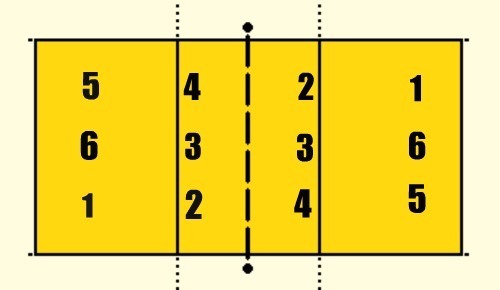
I wanted to make sure you knew this diagram and how the serving zones are labeled so that you understand what I mean when I say zone 1, zone 2 etc.
Serving Basics
Here are some basic principles to keep in mind when it comes to serving:
- When it comes to serving a volleyball, you want to be watching for who their best passes are, and those that struggle to pass.
- Many teams have one “go to” hitter that they will use. An aggressive serving strategy can actually take them out of the offense because the setter will have difficulty delivering the ball because of the pass they have to work with. .
- Depending on the offense the other team is using, there are ways to serve that will have the other offense confused if they do not communicate well.
- Find the gaps in their defense and exploit it with well placed serves.
Putting It All Together
Okay, now that we have that background, let’s talk about how to use this information to create some easy points for your team.
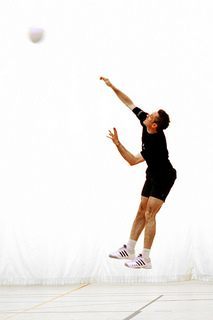 Zone 1 – I really like serving to zone 1 as a fundamental strategy and here is why. Very few setters will have the skill to run an offense when the ball is passed from zone 1. They will either have to turn to the ball (which keeps them from squaring up to the setting target, or they will stay squared up will be receiving the ball at an awkward angle. They will have fewer options when it comes to setting the ball.
Zone 1 – I really like serving to zone 1 as a fundamental strategy and here is why. Very few setters will have the skill to run an offense when the ball is passed from zone 1. They will either have to turn to the ball (which keeps them from squaring up to the setting target, or they will stay squared up will be receiving the ball at an awkward angle. They will have fewer options when it comes to setting the ball.
I also like a wide serve (towards the sideline in zone 1) as it forces the passer to move. Part of the the strategy behind serving a volleyball is to force the passers to move and take them out of their natural rhythm.
Zone 2 – I like to serve to zone 2 when the other team is in a rotation where the setter is coming off of the back row. Zone 2 is where the setter is going to move to when the ball is served. So, one of two things will happen. Either the setter will be forced to pass the ball (which means someone not used to running the offense will have to set the ball) or the setter will wait for someone else to pass the ball.
When the setter waits, either communication is poor and the ball falls to the ground, or you end up with players bumping into each other (setter is trying to get their setting position and the passer trying to pass the ball). All of this is good for your team.
Zone 3 – I only like this zone if the other team is in the rotation where their middle blocker is in the front middle spot, and will be starting at the net and backing off to start their hitting approach.
The reason for serving a volleyball here is that the middle blocker is usually one of the worst passers on the team. Plus, you are forcing the middle to pass as they are moving backwards. This is an opportunity to get them to pass poorly and it takes them out of the setting options for the setter.
You do not want to serve here if the libero gets the ball. It makes for an easy way to run their offense.
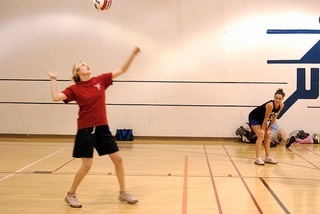 Zone 4 – I am not that big of a fan of serving to zone 4 unless the setter is on the back row coming from zone 5 to set. This can cause some confusion with people moving around in the area where the ball is being served.
Zone 4 – I am not that big of a fan of serving to zone 4 unless the setter is on the back row coming from zone 5 to set. This can cause some confusion with people moving around in the area where the ball is being served.
Some people say that zone 4 can be effective because you are forcing the outside hitter to pass the ball and hit. The reason I do not like this is that the outside hitters are generally very good passers and hitters. So, that means you are playing to their strengths when doing this. Usually, players that are younger ages are not as accomplished in both skills, and so this zone would make more sense with younger teams.
Zone 5 – I like serving a volleyball to zone 5, zone 6, and zone 1 regardless of the rotation. Here is why I like serving deep:
First of all, you are forcing the player to make a decision if the ball is in or out. If the team does not communicate well and talk to the passer about it being in or out, this could be some easy points.
Secondly, many players cheat up (meaning they sneak up towards the net) so that they can pass the short serve. The deep serve is going to force them to pass the ball while moving backwards and most people cannot accurately pass while doing it.
Third, if the ball is coming at the passer and it is higher than their waist, they are going to likely have to set the serve to try and control the ball to the setter. Setting the serve requires more finger strength and not every player can do it. You will get some players called for a carry or a double hit in these situations. That is why I like serving a volleyball deep.
Zone 6 – This one is a little harder because it is right in the heart of the passers that are good at passing. This is primarily only good if you are doing a deep serve.
Hopefully, these strategies on serving a volleyball will help you keep the pressure on the other team and end up with some easy points. That is what proper serving strategy is all about.
Where do you want to go now?
Basic Volleyball Drills – Learn the basics and get your skills in top shape.
Volleyball Training – Get in top shape and learn to train the right way.
Volleyball Scoring – Learn about the different scoring methods that have been used and how to put it to your advantage.

